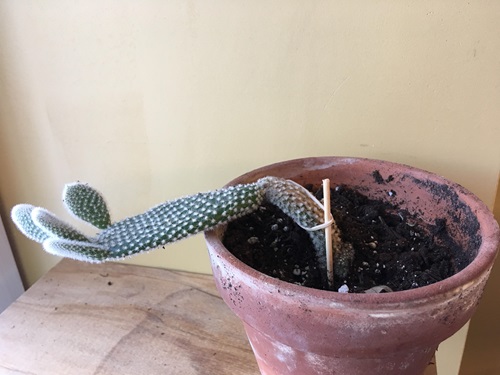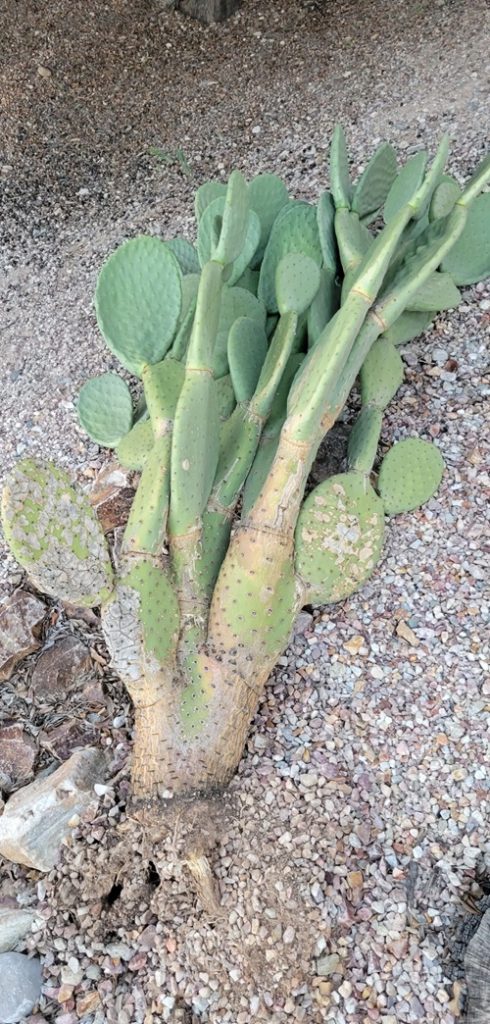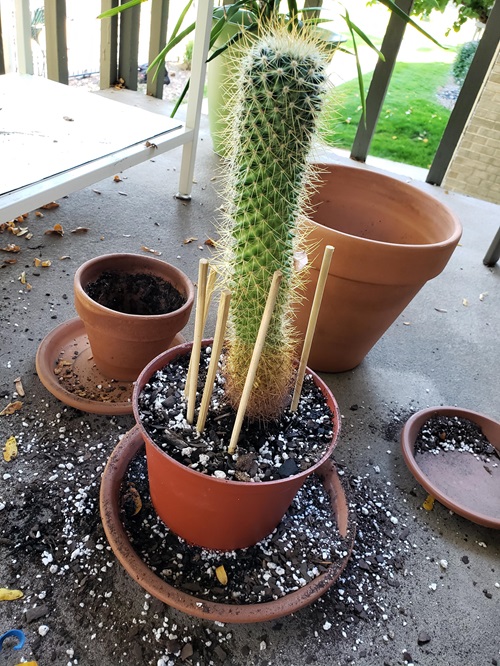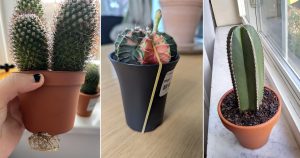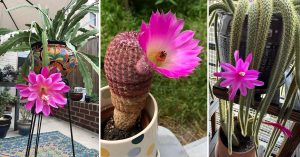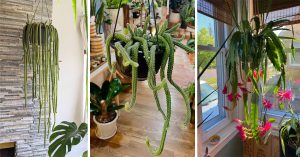If you see your favorite succulent toppled over and are wondering why is my cactus leaning and falling over? This article will help you with the reasons and solutions!

Certain cacti tend to grow erect, branching towards the heavens but this makes them susceptible to falling over or leaning to the single side too much. Their charm is diminished due to this instability, leaving alone the risks it puts on the plant. So this article will help you find the root causes and snip them in the bud for a thriving and sturdy cactus plant that stands with its head held high just like its grower!
Why is Your Cactus Leaning and Falling Over: Reasons and Solutions
Cacti can have trouble standing upright due to a plethora of reasons, some more serious than others. So have a look at all of them before you jump to any conclusion:
1. Overwatering
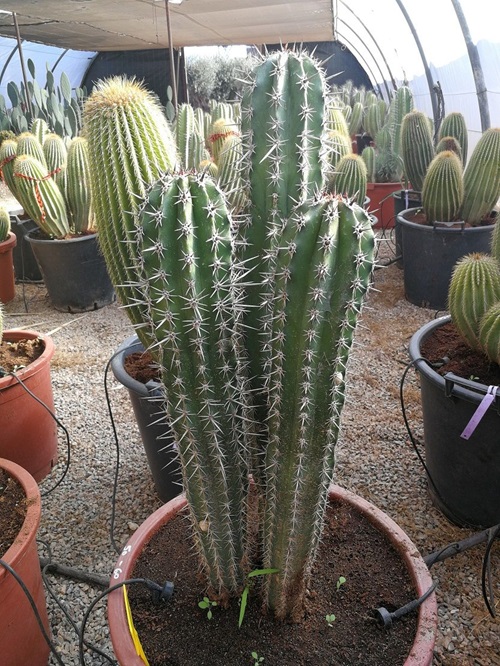
Cacti are succulents, and the trademark characteristic of a succulent is to be drought tolerant. They can survive on very little amount of water as they have adapted over millions of years to develop features such as spines and fleshy stems to prevent water loss. Therefore, the saying is right—you can kill a plant by watering it too much!
Overwatering can lead to root rot which is an underground killer of any plant. In the case of cacti, root rot can weaken the root system affecting their strength and the overall integrity of the plant.
Solution:
The simple fix is to just water less! It is recommended that in the summertime, watering should be done once in 7-10 days, while in the dormant season, once every 3 weeks will do just fine. Cacti require 90% of their soil to remain dry; therefore, feeling for dryness can also be a good indicator of when to water the plant.
2. Poor Soil Conditions
Cacti are drama queens when it comes to soggy, moist, or un-draining soil. This kind of soil can deter their root health and, therefore, make it harder for the entire plant to stay strong.
Solution:
You need to get your hands dirty and create the perfect potting mix for your cacti (if grown in pots). They usually flourish in textured soil that is a perfect blend of organic and inorganic constituents like coarse sand, perlite, coconut coir, pumice, crushed granite, gravel, and chicken grit. Make sure the plant isn’t packed too tightly within the soil and drainage is adequate.
3. Inadequate Lighting
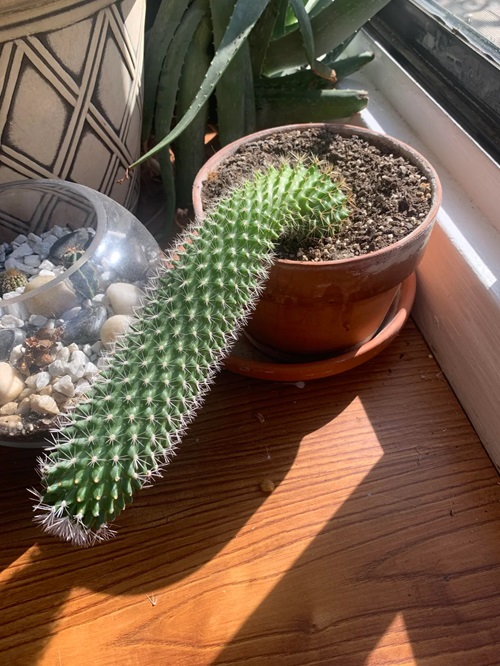
Sunlight makes a cactus robust, therefore reducing the chances of tipping over easily. Most cactus varieties require a minimum of 5-6 hours of direct sunlight to stay in the pink of their health.
Reduced or lack of sunlight can lead to etiolation, which is the scientific term given to the condition of plants where they display long, weakened stems that have a pale yellow color with smaller leaves and longer internodes.
Solution:
If grown indoors, pick a spot that near a south or west facing window that receives a few hours of bright direct sunlight as well and witness your cactus grow strong and proud. If your cactus is planted directly outside, make sure that there is no over brush or shade from other obstacles.
Note that the sunlight should be evenly distributed over all parts of the cactus as they can lean towards the side where sunlight predominantly hits.
4. Pests and Diseases
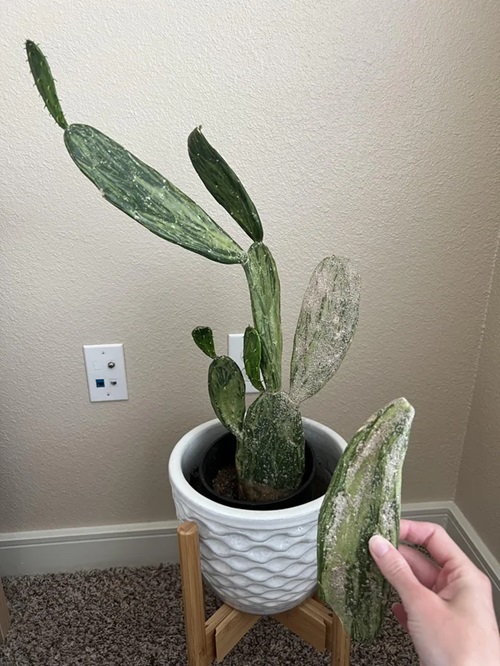
Cactus plants are quite resilient to pest infestations but they are not immune. In undesirable conditions, harmful bugs like aphids and mealybugs can pose harm to the structural integrity of the plant. They weaken the base of the stem. Fungal infections can do the same.
Solution:
You need to be a watchful protector over your cactus plant. Keep an eye out for telltale symptoms of an early infestation and get rid of it with necessary methods such as wiping with rubbing alcohol, neem oil sprays, and proper hygiene.
However, prevention is always better than cure, so ensure that the environment is not suitable for fungal growth or pests. Keep the humidity usually below 40% (varies from cacti species), with no stagnant water, and proper sunlight.
5. Improper Planting
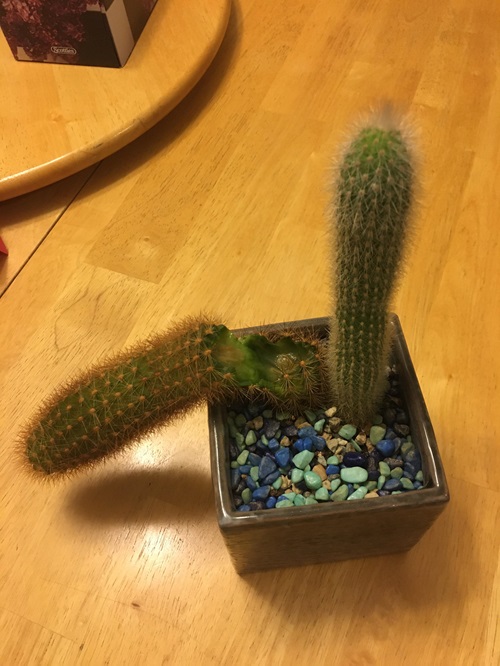
Any plant that is sown too shallow in soil will not be stable and tend to lean or fall. The same stands for cactus plants too. This issue can be faced while transplanting the cactus as well. Being too close to the surface hampers the cactus’ ability to anchor its roots deep enough to stand upright.
Solution:
While sowing or planting, ensure you have a hole at least 2 cm deep or deep enough that the cutting can stand vertically on its own. Some say that the right depth is equivalent to the width of the stem or root ball, so if the stem is 1 inch wide, stick the plant 1 inch deep into the soil.
6. External Factors
Nothing can stand against the wrath of nature, not even a cactus! If you have grown a cactus where it encounters strong gusts of wind, heavy rains, or is constantly hit by passersby, it is obvious that it will be damaged and eventually start leaning or completely fall off.
Solution:
Choose a spot where there is minimal foot traffic, and the plant is sheltered from winds and vents. A window sill can be the right location.
7. Right Pot Size
An excessively large pot can lead a slender stem to feel a bit tipsy and turn into the leaning tower of pizza, so the perfect size of pot is required.
Solution:
As cacti love shallow and snug pots, choose one that is slightly bigger than the spread of the plant. As per say the perfect size doesn’t exist as they vary from variety to variety but keeping the pot on the smaller end will benefit maintaining a stable shape and structure.
What Do You Do If Your Cactus Has Already Fallen?
If you were unable to catch the root cause of the problem before the tilt reached an extreme, there still may be a chance of restoration of the shape and angle.
Trellis—Using a trellis to provide support can help the plant grow with assistance and later be steadfast enough to continue on its own. It’s just like a plaster over a broken leg!
Rotation of the Pot—Constant exposure to sunlight and wind on one side of the plant can cause it to lean, so occasionally rotating it can fix this issue.
Prune or Propagate the Topmost Portion – if your plant has got too tall, releasing some stress by chopping off the top part can help maintain the balance of the plant.

